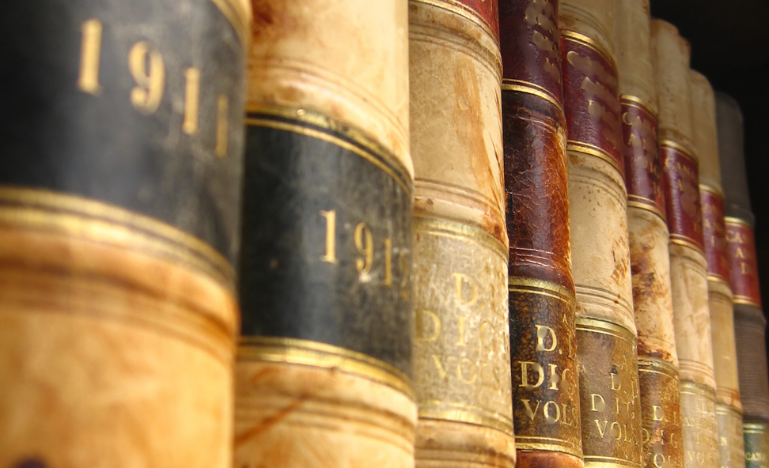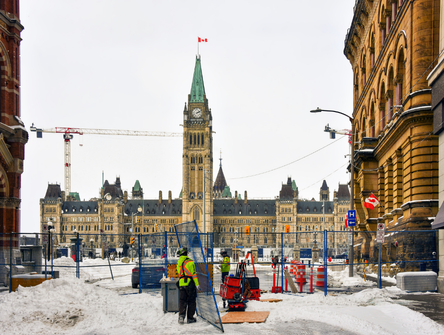AI is not the panacea to translate court rulings
The technology can translate documents quickly, but pundits say without human oversight, questions will arise about the reliability and value of AI-translated decisions.

The potent blend of language, politics, and the advent of artificial intelligence has put the Supreme Court of Canada and the Quebec courts in a pickle.
This past June, for the second time in three years, Canada’s Commissioner of Official Languages summoned the nation's highest court to translate all of its rulings dating before 1970 to comply with its obligations under The Official Languages Act.
However, Chief Justice Richard Wagner says the court does not intend to translate the more than 6,000 judgments rendered between 1877 and 1970.
“It's not bad faith, it's a question of means, (and) it's also a question of reasonableness,” he said at a June press conference, noting it would take about a hundred translators 10 years and between $10 million and $20 million to complete the job.
“We don’t have that money.”
Justice Wagner said that translating pre-1970 decisions would be of little utility and would only “please those who are lovers of legal cultural heritage.”
That stance perplexes Étienne-Alexis Boucher, the executive director of Droits collectifs Québec, the organization that lodged the complaint before Commissioner Raymond Théberge. He maintains that there are several judgments, such as Saumur et al. v. Procureur général du Québec and Roncarelli v. Duplessis, that were handed down before 1969 and are still seminal today. Boucher believes that the situation discriminates against French-speaking Canadians and Quebecers whose “right to benefit” from a French translation of pre-1970 SCC rulings is not respected by an institution that should be “exemplary” and respect the rule of law.
The Bar of Quebec, which recently met with Chief Justice Wagner to discuss possible solutions, maintains that translating the court’s pre-1970 decisions would help facilitate access to justice and strengthen public confidence in the justice system.
“The issue of legal heritage is an important one for the Quebec Bar,” says spokesperson Martine Meilleur.
“A number of avenues are currently being explored with partners in the legal ecosystem, and work is continuing on funding issues in particular.”
Numerous legal actors have publicly evoked the use of artificial intelligence (AI) to translate decisions as a potentially interesting avenue that “could help us,” as Chief Justice Wagner put it. The Société québécoise d’information juridique (SOQUIJ), the Quebec body that publishes the province’s rulings, is also considering using the new technology to translate decisions, as revealed in a recent provincial court ruling. Other bodies, including the Canadian and Quebec Judicial Council, are also studying the use of AI in legal proceedings.
“AI is a tool like any other tool, and it's no use to stick one's head in the sand and pretend it's going to go away,” says Karine McLaren, a law professor at the Université de Moncton.
“So we're going to have to adapt our working practices to it, or we're going to risk being left behind.”
However, like other legal experts, she warns that it’s far too soon to trust AI despite its obvious advantages. There is little doubt that AI can handle large volumes of legal documents and translate them much faster than human translators, which in turn could reduce the time required to make court decisions available in both official languages.
Automating translations with AI also reduces the need for expensive human translation services at a time when the justice system is struggling with chronic underfunding.
“While the use of artificial intelligence can certainly facilitate the translation process, it is important to stress that it can in no way replace human expertise, particularly that of jurilinguists,” says Vicky Ringuette, director of the Ottawa-based Centre for Legal Translation and Documentation.
The use of AI in a legal context also raises several important challenges “that we really can't ignore,” says McLaren, who’s also the director of the Centre de traduction et de terminologies juridiques (CTTJ), an international authority on the use of common law in French.
Legal translation is not simply about translating or using an equivalent for a word in another language. In officially bilingual and bijural countries like Canada, the challenges are particularly acute. It is an intricate undertaking requiring translators and law professionals to work between two languages and two cultures while often navigating between two co-existing legal systems with different legal concepts and terminology.
Legal translation also entails interpreting the law. Often, legal translators and jurilinguists have to paraphrase a word or phrase to accurately convey its meaning because the legal terminology is absent in the other official language. That is something AI is incapable of doing at the moment. McLaren says that technology needs to be taught to recognize and accurately translate legal terminology while preserving its distinct legal meanings. It also “needs to learn to handle regional linguistic nuances to ensure that translations are culturally and legally appropriate,” she adds.
Judicial opinions communicate a court’s conclusions and its reasons by presenting a structured discussion of the facts, legal principles and governing authorities involved in a case. It is a medium that articulates, discusses and explains the legal rationale behind an opinion, says Karim Benyekhlef, director of Cyberjustice Laboratory and a law professor at the Université de Montréal.
“Law is an art of subtlety in words,” he says.
“Using AI to translate an instruction manual for assembling an IKEA table is fine. But at this stage, it's not possible to translate judgments, especially those of the Supreme Court of Canada, using automated tools alone, however well-developed they may be. They make mistakes.”
AI also has a propensity to make things up as Benyekhlef can attest. He and his team of PhD students conducted a test using JusticeBot, an AI tool developed by the Cyberjustice Lab that provides legal information about Quebec housing laws, compared to generative AI. The new deep deep-learning model, akin to ChatGPT, generated articles of the Civil Code of Quebec that do not exist.
The Office of the Registrar of the SCC also encountered problems. On a trial basis, the Office translated several decisions using machine translation tools and found errors and inconsistencies in the translations. Stéphanie Bachand, executive legal officer and chief of staff, Chambers of Chief Justice Richard Wagner, says that is worrisome and could undermine public confidence in the judiciary and the administration of justice.
“The high quality of the original and translated versions of the Court's decisions is one of its strengths and contributes to its national and international reputation,” Bachand says.
“Consequently, translated versions of lesser quality than the original versions would do considerable harm.”
Other obstacles lay ahead before AI can seriously be considered a legitimate and reliable tool to translate rulings. Legal decisions usually reference jurisdiction-specific laws, statutes, and precedents, some of which are already bilingual. AI must be capable of sourcing and identifying existing references, such as their author and provenance, says Jean-François Lymburner, the head of the federal Translation Bureau.
“There are several tools today that will offer you a translation, but you don't really have any link to know who translated it,” he says.
That ties into another hurdle. Consistency is key in law, and maintaining consistency in legal translation is critical because inconsistent translations can lead to misunderstandings and the misapplication of the law, McLaren says. As a result, it will become increasingly important to develop standardized legal terminology as AI tools become more ubiquitous. That will prove to be a daunting feat because jurisdiction-specific terminology is not applied uniformly across Canada.
It will also be challenging to overcome resistance to adopting the new technology. There is a documented severe lack of experienced legal translators and jurilinguists in Canada. Jurilinguists, who are trained in language and law, review or revise translations normally produced by legal translators.
“Asking these professionals, who are very few and far between, to review what a machine has produced is not an attractive proposition right now, at least until the language model has attained a level of accuracy which is expected of experienced legal translators,” McLaren says.
The judiciary has other concerns as well. A recent Court of Quebec ruling revealed that the province’s chief justices are worried about security and data confidentiality surrounding AI's possible use with translation. Those concerns came to light after a provision of Quebec’s Charter of the French language recently came into force, requiring the “immediate and simultaneous” filing of English rulings into French.
According to an internal study commissioned by the provincial government, SOQUIJ estimates that judgments covered by the provision will require the translation of roughly 3,000 pages. SOQUIJ is contemplating several options to meet the new demands, including outsourcing translation services, hiring translators and using AI.
“The wisdom of entrusting a highly sensitive draft judgment to software or artificial intelligence in the pre-release stage is alarming, to say the least,” Judge Dennis Galiatsatos said in R. v. Pryde.
The translation field is undergoing a transformation and is going through a “turbulent” period, says Lymburner of the Translation Bureau, the 17th largest language services organization in the world, translating more than 350 million words annually. The emergence of a new breed of generative artificial tools is prompting the legal world to evaluate its potential. But legal and language pundits say it’s clear that human oversight will remain essential to review and verify translations of court decisions produced by AI for the time being.
“Without that ultimate human intervention, then questions will arise as to the reliability, the value, and the very status of an AI-produced translation of a court decision,” McLaren says.
But even if AI could reliably and accurately translate rulings, organizations calling on the Supreme Court to translate its pre-1970 decisions would face an insurmountable stumbling block.
“The ultimate problem is that they’ll never be official versions,” says Justice Wagner, because the authors of the rulings are no longer with us.


